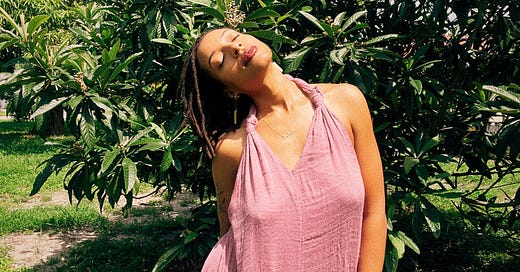Where are we in the wellness space?
It’s 2025, and wellness spaces still have the same problem: the absence of people who look like me.
If you’re Black, brown, or part of another marginalized community, chances are you’ve walked into a yoga studio, joined a group meditation, or enrolled in a wellness certification program and immediately noticed you were one of few. In spaces that claim to be about “healing” and “inclusivity,” many of us are left asking, “Where is the space for us?” Because while many of the very practices we turn to for nourishment weren’t born from the hands of white folks, looking around most wellness spaces, you’d never know it.
Despite the global roots of so many wellness practices—yoga, Ayurveda, meditation, reiki, etc.—these spaces remain overwhelmingly white, both in leadership and participation. And while the mainstream wellness industry has raked in billions over the last decade, the representation of BIPOC—both as practitioners and consumers—hasn’t kept pace.
The wellness industry in the U.S. alone is valued at over $5 trillion, yet Black folks are still largely absent from leadership roles and business ownership in this space. According to a CNN report, only 5.7% of physicians in the U.S. are Black, despite the fact that Black people are disproportionately affected by health disparities.
Additionally, mainstream wellness companies often overlook marginalized communities, rarely marketing to them. And because many wellness spaces are designed for affluent white consumers, they fail to recognize the distinct needs and values of those who are Black, brown, and/or queer, for instance. This leaves marginalized folks to navigate access to culturally relevant practices on their own, creating a barrier to wellness for millions.
Keep reading with a 7-day free trial
Subscribe to Vibe Check to keep reading this post and get 7 days of free access to the full post archives.





